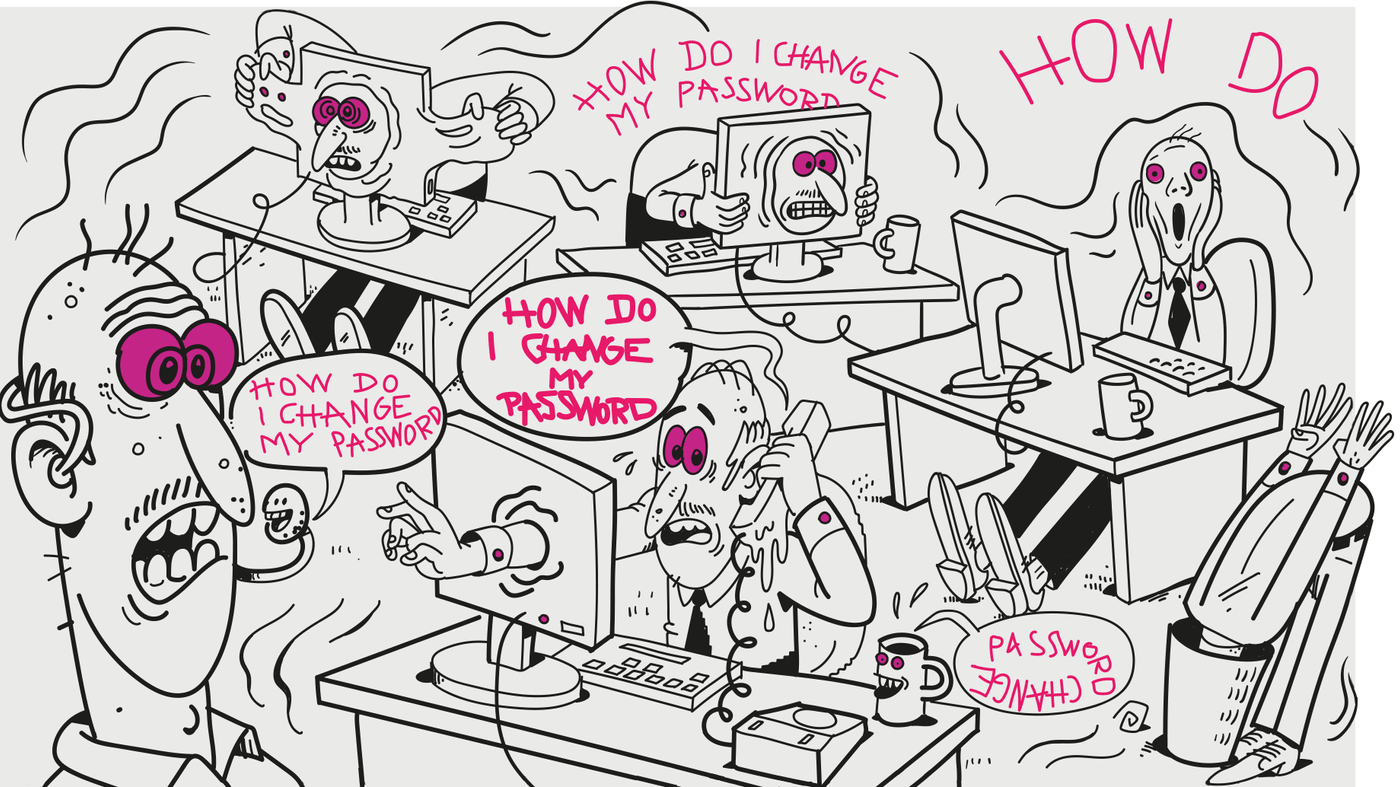Helping Hands
OMR and OMQ show how you can turn your customer service into a powerful marketing tool
Here you will learn how to automate your communication channels, use an AI in your service and turn your service into a powerful marketing tool.
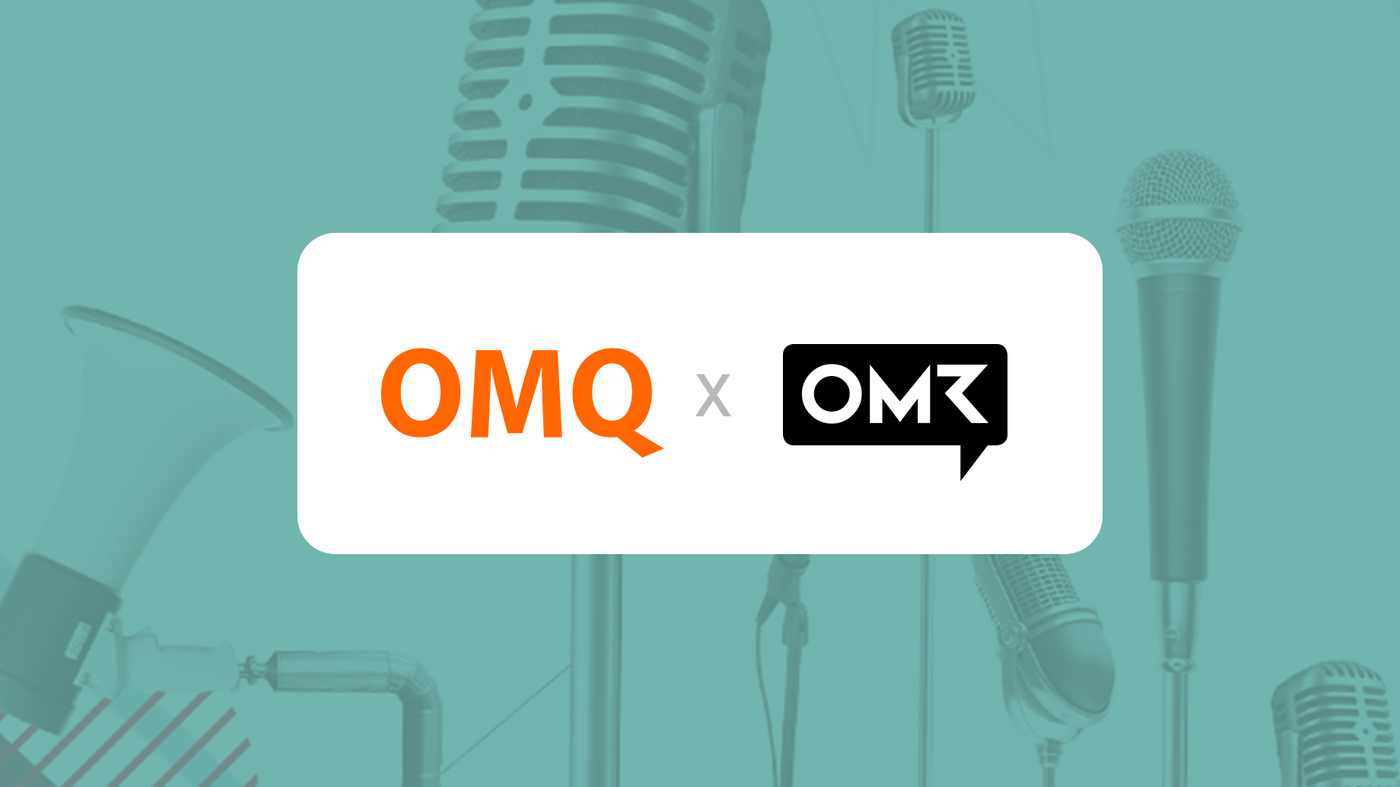
“Good customer service is marketing.” - that is the subtitle of our masterclass at OMR. The master class our CEO Matthias Meisdrock made, was all about customer service. And of course, we do not want to withhold our tips and tricks from our readers. In the following text, we explain why an, above all, how customer service can be used as a powerful marketing tool.
Customer service is marketing - but why?
Typical customer acquisition looks like this: You invest in a marketing campaign and thus attract customers. Ideally, they come to the website, are convinced by the products and put them in their shopping cart.
However, this already shows that the marketing department is not the only vehicle for success: if the customer has a question at this moment that is not answered, he cancels the purchase. A lot of money was invested so as to win the customer, but no income was generated because the purchase was not completed in full.
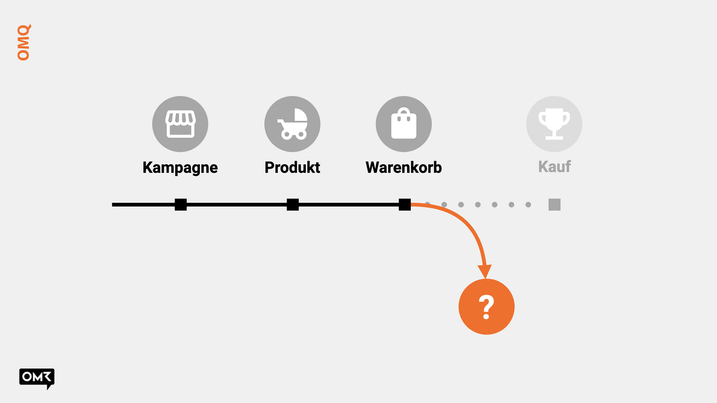
In moments like these, customer service plays a huge role, because optimal service guarantees that questions can be asked anywhere on the website. This in turn means that the shopping experience does not have to be interrupted or even given up.
Bad experiences with insufficiently answered questions usually lead to the shop in question being avoided due to bad reviews … Customer service should be seen more as an opportunity that guarantees long-term customer loyalty and turns customers into fans of the company.
How does it work? It is very simple: One-on-one support, where every customer has 24/7 access to an advisor.
But wait a minute…
… to have an individual consultant for every possible customer who also works around the clock would be far too expensive. No company has enough resources for this, and the only solution would be to raise the prices of the products - which in turn would make them too expensive.
We show how you can achieve maximum success with your customers with fewer resources and, with the help of an ideally equipped customer service, turn them into, who keep coming back to buy from the comapny.
Service for everyone: Offer different service channels
A very important point in good customer service is the expansion of various service channels. The mixture of indirect and direct channels is essential because every customer prefers a different form of communication.
Service channels such as FAQs, contact forms, e-mail, chat and telephone are probably known to everyone, and everyone has used customer service at least once. What challenges did you face then? Perhaps an answer could not be adequately answered or the channel that you would have liked to use was not available.
A customer who does not want to have to wait and would rather find a solution on his own is unlikely to call a company’s call center to ask questions. Therefore, it is important to know which service channels must be available and how to work them properly, in order to offer ideal communication for both customers and the company.
We will show you how to optimally set up all service channels next.
The FAQ as a central point of contact
A large group of customers do not want to come into direct contact with customer service agents. An FAQ is the perfect solution because customers can look up their question, just like on the Internet, and ideally find a solution directly.
The FAQ page should not simply be understood as an “FAQ”, but also as a help page.
Supporting the search with an auto-complete is an essential part of customer service. It is recommended to keep an eye on the most natural language communication customers often use words to describe their problem that do not necessarily appear in industry lingo. The nasal pad quickly turns into a “rubber” on glasses. At this point, the system should be able to immediately identify what term is it referring to. In addition, there is a tolerant search that processes spelling errors.
A help page should …
- work with natural language (similar terms, spelling tolerance)
- Give context-based autocompletion
- Provide AI-based language analysis of search inputs
Ideally, the customer will find the right solution just with simple navigation, even before the actual search, as the system recognizes frequent search queries and arranges them according to their frequency. Just like auto-completion guides the customer to the right solution within seconds, categories should also be used to guide the customer to the correct answer.
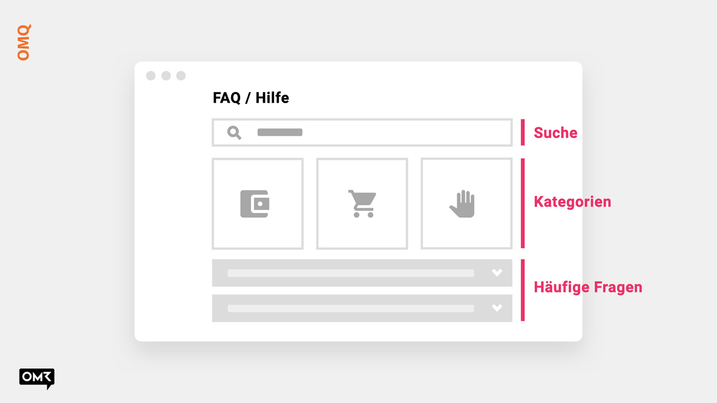
Customers want to be guided as accurately as possible. “Real time” is the keyword here. Both autocomplete and search results should therefore be displayed in real time.
You should then pay attention to the help page so that it…
- offers a simple orientation with the help of categories
- displays current information and changes directly
- provides a dynamic real-time search
The contact form as proactive help
A common mistake that is made with contact forms is that too much information is required from customers. So you have to give your title, your gender, your first and last name as well as your telephone number and generally fill in a lot of fields that do not help you with a simple question.
Another mistake is that the contact form is often not set up from the customer’s point of view, but mainly asks for data. In order to meet customers’ needs, the message field should move to the top so that the description of the problem comes first. In the second step, he should give his name and email so that he can be contacted later.
The structure of a contact form should be built as follows:
- Only the most important fields are inquired
- The message field should be at the top
- The structure should be simple and clear
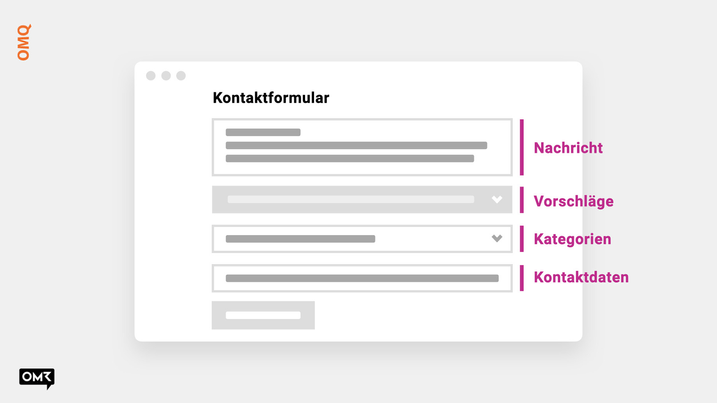
New technologies that are able to respond automatically can also be of great help. They can be used to answer customer questions immediately and before submitting the form.
For example, if the customer asks the following question: “My glasses are broken, what should I do now?” he will immediately get an answer on how to make a complaint. The customer does not have a long waiting time for an answer and the service does not have to process this request. The customer is satisfied, and customer service works more efficiently.
The following also applies to such technologies: All answers must be up-to-date. The service department should be able to enter current questions and information into a central database and the software should then, independently, ensure that this information is spread out.
Checklist for the ideal contact form:
- Clear and simple structure
- Proactive real-time responses for incoming customer inquiries
- Answering timeliness is controlled centrally by the service department
E-mail: indirect but self-replying
E-mail is still being used as a communication channel by many customers. Similar to a contact form, there is an option here to describe a problem in detail. However, this is an asynchronous channel, which means that this question cannot be dealt with directly, as it is first sent to the company, then validated and finally answered by service employees.
Answering emails does not usually work around the clock, but is bound to fixed times. So it makes sense to direct the customer to the contact form, where the question can be answered directly with a AI system.
Incoming emails should still be answered promptly and efficiently. It is possible to work with text modules in the ticket system, whereby a reply mail is assembled with a simple click and sent directly. Ideally, a tool that recognizes the intention of the customer request is used, and automatically suggests matching answers, and then inserts them directly into the response mail.
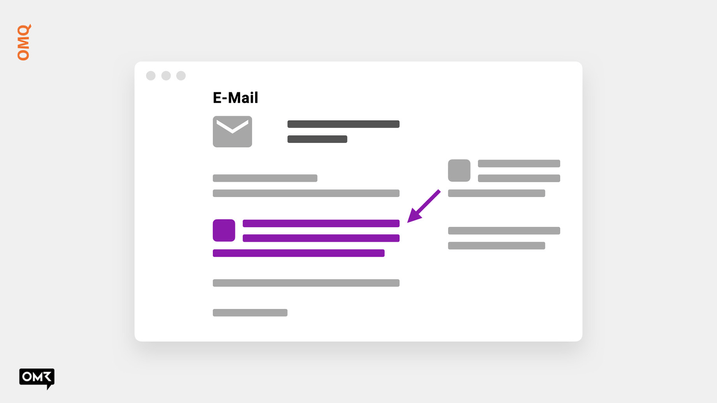
It is important for this channel to have the possibility of automatically answering emails that are received outside business hours. Artificial intelligence can help here to send replies directly as e-mail without any agent intervention.
In this case, the AI determines whether it is sure of an answer by recognizing and evaluating the intention of the request. It must be clearly shown to the customer that artificial intelligence is being used.
Checklist:
- Customers are guided to the contact form to answer questions directly
- Smart text modules are used for faster answers and more efficiency
- AI-based email replies relieve this communication channel
Chat / Messenger / Telephone - channels for direct communication
One-on-one support for the customer is provided by service channels that include direct communication with the user. A chat system (for example Userlike) Chat is on the website and can be used anywhere when needed and clarifies questions immediately. If you click on the chat bubble on the website, a chat window opens and a service employee takes care of the customer’s request. The buying process in an online shop is not interrupted.
The second direct channel is the messenger. This includes WhatsApp, for example, which is very popular among private friends and is now increasingly being used by companies as a service channel. WhatsApp, for example, is a mixture of synchronous and asynchronous communication. One problem that affects messenger chat, however, is that many customers do not want this form of communication because they keep private things private and do not want to take them into the business world.
In order to use the chat on the website or in messenger more efficiently, a chatbot can be integrated into the system. It then takes care of the customers’ concerns and is even able to carry out tasks such as changing the delivery address itself in the background. With a chatbot, a company is able to be reachable 24/7 and is, therefore, not tied to fixed working hours when it comes to customer service.
You should take care of customers by giving them the opportunity to always get in touch with an employee. In addition, a chatbot should never imitate a service employee, but instead identify itself as an AI bot despite its natural communication.
The advantage here is that you can always write to the customer and they will read and see the message. The 24-hour support guarantees that questions can also be handled even when there is no service employee in the office. This means that customer care is possible on public holidays and has the same quality as during normal working hours.

Checklist:
- Real-time response: The customer sees and reads the answer immediately
- 24 hour support
- Forwarding to employees must be an option
The telephone is the most direct channel, because you have a person-to-person connection to the customer and you can help and speak directly with him. However, this channel is also the most expensive. The longer you talk to a customer, the costlier it gets. Long waiting times are also another problem. Customer service that cannot help immediately becomes a very negative experience for customers.
More efficiency with artificial intelligence
In order to automate processes in customer service and make them more efficient, AI-based systems are used to answer customer inquiries directly.
The goal of artificial intelligence in customer service is to help the customer quickly and provide them with the right solutions. The great benefit for customers is that they receive an answer immediately. Nevertheless, you should pay attention to how and where you integrate the AI into your customer service.
AI makes knowledge available. Customer acceptance of indirect service channels is usually higher than that of direct channels. Recurring inquiries should therefore be routed via indirect channels, while more challenging inquiries should be processed by service employees with direct service.
AI in customer service works in such a way that it understands the customer’s intentions and can deal with recurring inquiries. All service channels should be linked to one another via a central knowledge database. It is also very important to get a system that works out-of-the-box. That means that immediately after its implementation, it is able to process customer inquiries independently. It must also be dynamic, and react directly to new entries. Information should only be entered once and then immediately make the same knowledge available on all service channels.
The goal of t AI is to automatically solve recurring questions. No matter if questions like: “What payment options are there?”, For which an answer is sufficient, or questions for which an action must be carried out in the background in order to answer them. So, for example: Can I change my delivery address? - in the best case scenario, the AI itself is able to do this.
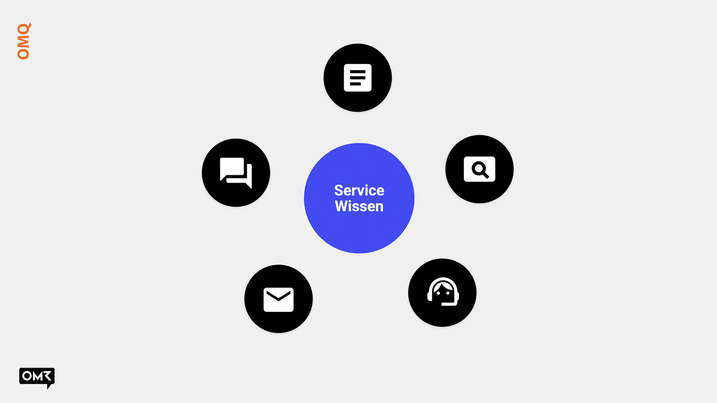
What can ideal customer service do?
Customer service should be made available to the customer in the best possible way so that it can be used by everyone. You have to work efficiently: pushing as many questions as possible to indirect channels, because they can be better handled there, leaving more resources that can then be distributed to the direct channels.
You should also ensure that customer service becomes a feedback channel too. If there are certain processes in the online shop that are not working, customer service gives you the best chance to become aware of these errors and to correct them. So if, for example, questions about “payment options” pile up, it makes sense to highlight them more on the website, because apparently a large number of customers do not find them immediately.
Customer service is marketing because a happy customer is good marketing.
Of course, it is not possible to render our entire master class in as much detail as Matthias explained. For this reason we have uploaded our masterclass on YouTube. Click here to see our video. If you want to stay up to date with our OMQ Magazine, you can subscribe to our newsletter or arrange a demo if you also want to use your customer service as a marketing tool! :)


